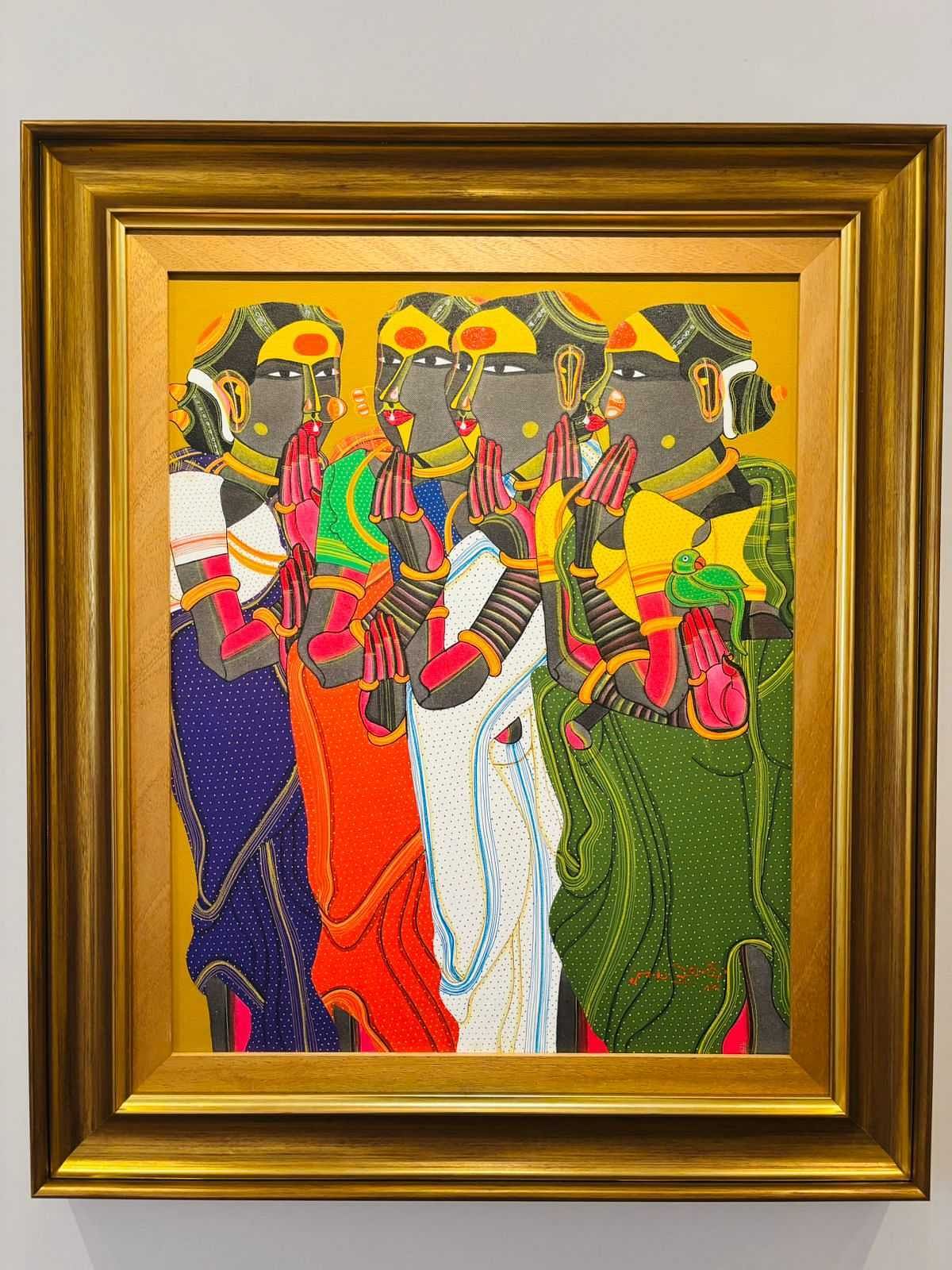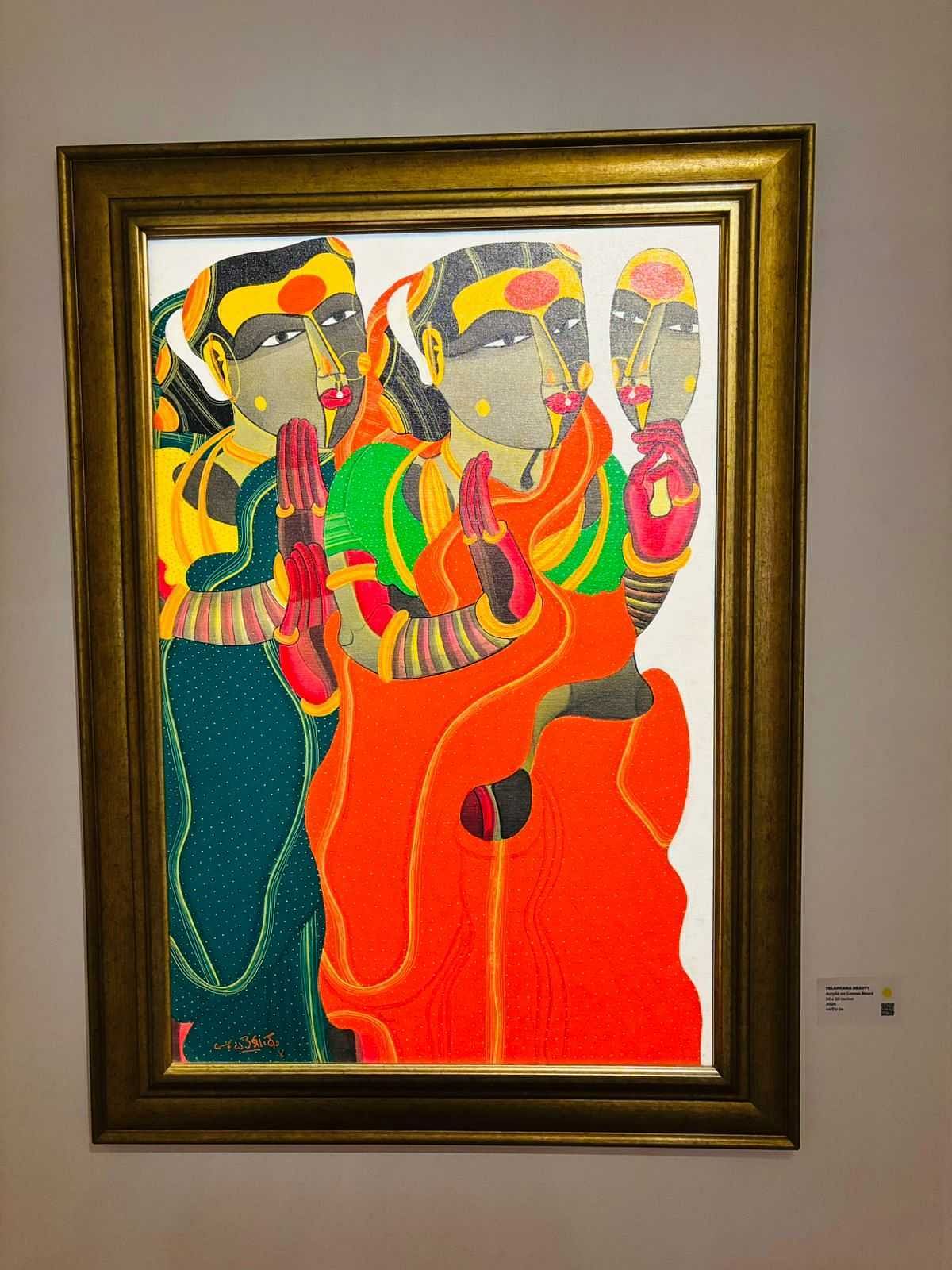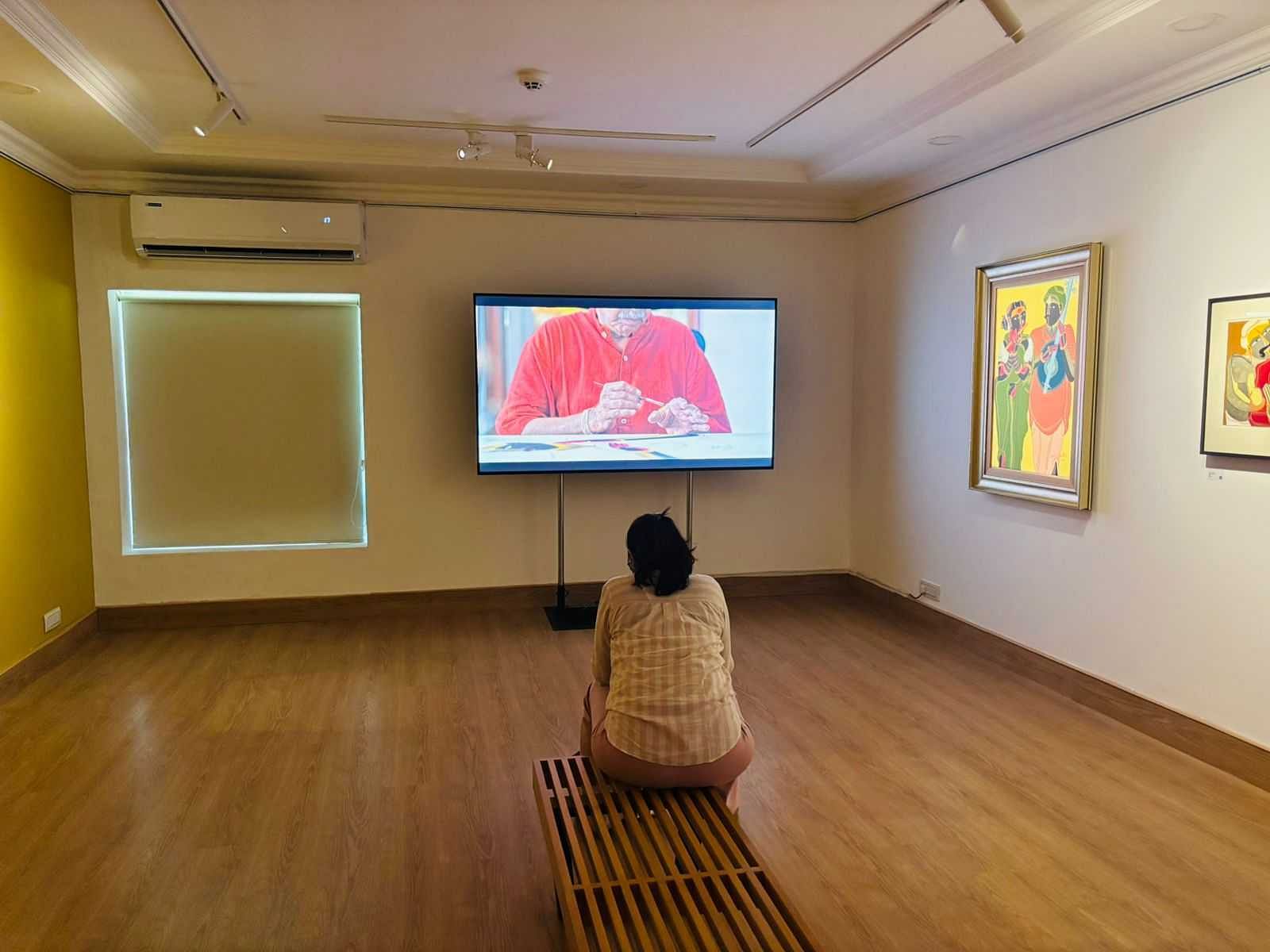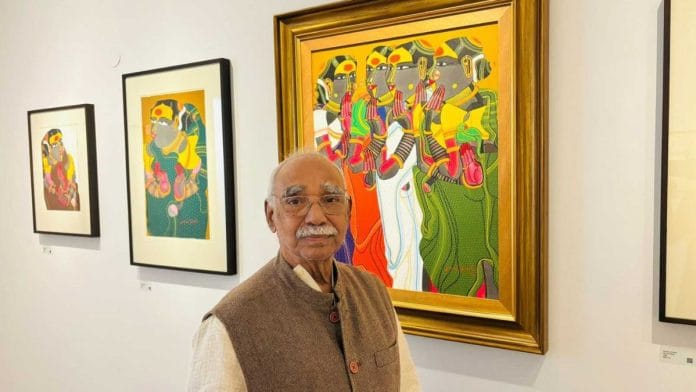New Delhi: The legendary 84-year-old Telangana artist Thota Vaikuntam is a modernist who’s completely disenchanted with modernity. He might have moved from his village to Hyderabad’s futuristic Financial District, but the high rises will never find a place in his art. His heart belongs to depicting what he knows best: the everyday lives of men and women in rural Telangana.
And a new solo exhibition, on display from 17 October to 20 November, shows just how well he knows his subject.
All the light in Panchsheel Park’s Art Alive Gallery, where his exhibition is running, seems to come from his canvases on the wall. Slivers of metallic gold shine through the bright yellows, reds, and greens. Parrots peaking out of frames, men and women gossiping with each other, and women adorn themselves in handheld mirrors. This is the world Vaikuntam knows, and his art offers the rest of the world a glimpse of it through his colourful eyes.

The show, ‘Thota Vaikuntam: Redefining the Cultural Gaze’, spans his work across four decades. Vaikuntam, dressed in a brown Nehru jacket, watches visitors looking at his art playfully — his eyes twinkle below his Groucho Marx eyebrows, enjoying how his art draws people.
“I’m a villager, not a city man. My inspiration will always be my people in Telangana,” he said, before switching to Telugu: anthe, he said with finality. That’s all.
The centrality of women
Vaikuntam grew up in the village of Burugupalli, in Telangana’s Karimnagar, where he spent his childhood sleeping under the stars and watching travelling street plays, puppet shows, and folk dances. The vividness of these performances would underscore the everyday scenes of rural life that would crop up on his canvas.
While he started off working with charcoal — his earlier works are striking in their bareness — he is best known for working with bright colours. He loves working with primary colours, he said, because it strips humanity back to its most basic form. Greens only started showing up in his later work, bringing his characters to life in their natural surroundings.
This vibrancy is what heralded him as a modernist in Indian art — a modernist with a distinctly rustic subject matter.
Women are central to Vaikuntam’s art because according to him they are central to the human experience. His mother shaped this understanding when he was a child: when he’d wake up in the morning, he’d see her working. When he went to bed, she would still be working. And somehow, she managed to care for the entire family and manage the household, making all the important decisions.
“Women are the centre of the world,” he said, sitting against one of his paintings of two women in patterned saris, parrots perched on their shoulders. “Without women, there is neither creation nor existence.”
The women in his paintings are sensuous, voluptuous, and unabashed. The human figure is never sexualised, only depicted. He views the richness of “traditional” life as embodied in women, whom he considers the custodians of culture. In one painting, a woman draped in a yellow saree and red blouse looks at herself in a hand-held mirror, carefully applying her bottu and kumkumam. In another, a group of women are whispering secrets to each other.

“In Vaikuntam’s art, there is a sense of subtle humour and dynamic movement,” wrote art historian and critic Ashrafi S. Bhagat in the curatorial note on the exhibition. “The simplicity of his heart and vision manifests in his women-dominated compositions.”
Also read: 4 Indian artists set to debut at Santa Fe festival—inspired by Warli, Madhubani, local roots
The rigour of creating art
Vaikuntham would wake up at 4 am every day to paint. His hands wouldn’t rest until his brush had finished dancing across his canvas.
These days, the pace of his work is slower. He takes his time enjoying the daylight and the way it interacts with his paint. He spends his evenings teaching his grandchildren and others the techniques of painting.
The technique is surprisingly important to Vaikuntam, whose vibrant colours were a departure from his contemporary modernist Indian colleagues.
He first came to Hyderabad in 1970, to enroll at the Hyderabad College of Art and Architecture. He also won a fellowship from the Andhra Pradesh Lalit Kala Akademi to study painting at Maharaja Sayajirao University, Baroda, under the tutelage of KG Subramanyan. This is where he learned the science behind art —something he thinks is missing in today’s age of digital art. Technical skill isn’t seen as important today, he said.

“It was only after I took training that I understood art,” he said. “That technical knowledge is very important to translate your vision.”
It sounds old school, but the discipline of technical training is as necessary as natural talent, according to him.
The Hyderabad of his youth was extremely different from the Hyderabad he lives in today. During his heyday, artists would gather around hot cups of chai and Irani biscuits, discussing politics and art, and building a community around each other. It’s how he found himself working on Tollywood film sets as an art director, and it’s this community that gave him the confidence to explore his art. Along with his contemporaries Surya Prakash and Laxma Goud, the three artists came to represent an artistic movement and the “development of modernity” in the region, according to a new book Thota Vaikuntam: Redefining the Cultural Gaze on him that Art Alive Gallery has published.
“The sketch is the most important part of the painting,” said Vaikuntam, drawing attention to the exact level of detail that goes into his work. “You need to have a clear idea of what you want to create, and then sketch it out. Without that, there is only confusion.”
This rigour is missing in this day and age, he said. The youth are too impatient — they want to skip the process and arrive straight at the outcome, according to Vaikutam.
“Like a painting, life is also about sketching,” he added. “You need to first have an idea, then make an outline, and only then can you create a beautiful work of art.”
(Edited by Ratan Priya)






